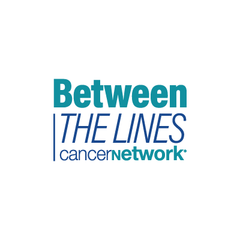
mNSCLC: Biomarker Testing and Patient Adherence to TKIs
A brief review of biomarker testing in metastatic non–small cell lung cancer to identify alterations such as the EGFR exon 20 insertion.
Episodes in this series

Transcript:
Gregory Riely, MD, PhD: Next, we can go on through, how does this paper impact your routine practice, particularly for biomarker testing, therapy selection, and therapy sequencing? I think we’ve talked a bit already about therapy selection and sequencing. Maybe we’ll talk about biomarker testing next. I’ll tell you; biomarker testing is one of those topics that we could talk about for hours because I feel like everybody has a variety of approaches. But I would say that probably all of us are doing our best to get all the markers that we can get in the fastest time we can get them. Our colleagues here in molecular pathology have a fabulous platform for next-generation sequencing, but the downside is it takes a while, it takes much longer than I’d like. Here, when we’re meeting a patient for the first time, we will typically use a platform that does a rapid test looking for EGFR point mutations and EGFR exon 20 insertions. I think that’s really been helpful for us to understand and identify patients with EGFR exon 20 insertions up front. What do you use to do initial genotyping?
Tarek Mekhail, MD: I love your approach, Greg. We have an in-house 50-gene panel, but it does take 10 business days. We have reflex testing, so we utilize that a lot. My approach, however, is if I see a patient in the clinic today who doesn’t have a result or a result is pending, I add ctDNA [circulating tumor DNA] testing, and I do liquid biopsy. I’ll do both, unless I have on my desk a report with an actionable result. If I have a report from ctDNA testing or from liquid biopsy that says the patient has an ALK fusion, I don’t really look for the tissue testing result. It’s already ordered, but I don’t wait for it, and vice versa. If I have tissue, I don’t order the liquid because I have an actionable result. If I get no result on the 50-gene panel that we have, I still do the liquid biopsy because we do believe it’s complementary. You said it well, we need to do everything possible to know as much as we can about the patient.
Gregory Riely, MD, PhD: It’s always amazing to me, every time we meet a new patient, that race to figure out what mutation they’ve got or what their PD-L1 status is so that they can finally figure out what to do for their treatment. When there’s a delay in that process, it’s a brutal thing for a patient and us as we’re trying to figure out what the best thing is for that patient.
What strategies do you use to enhance adherence to tyrosine kinase inhibitors, talking about adverse effects, ways to mitigate and manage those? I’ll give my take on this thing. I think the range of tyrosine kinase inhibitors have such a range of toxicities that we have to have a very specific education plan for each patient we’re starting on these drugs. That’s what we do. In my clinic, I talk through what I think are the common adverse effects. I have a wonderful nurse who works with me who then talks with the patient about what she sees as the common adverse effects. I think one of the big steps that we take is frequent contact in those first couple of weeks when the patient is on the drug. I would say the first month on a kinase inhibitor is the hardest because the patient is trying to understand the adverse effects and trying to understand how to manage it. We’re in relatively close contact during that first month. The first week we give a call, the second week we see them, third and fourth week we give a call as well because I think it’s important to stay in close contact with these people. Oftentimes these are people you’ve known for a while because you’ve had them on chemotherapy, but you’re adjusting things with a new treatment, and they need a little more close follow-up during that time.
Tarek Mekhail, MD: I can’t add much to what you said. That’s the perfect way to do it, so I try to do the same.
Gregory Riely, MD, PhD: I think as we talked about earlier, the kinase inhibitors, in particular with mobocertinib, focusing on managing the diarrhea as early as possible is really an important element.
Transcript edited for clarity.
Newsletter
Stay up to date on recent advances in the multidisciplinary approach to cancer.

































































































